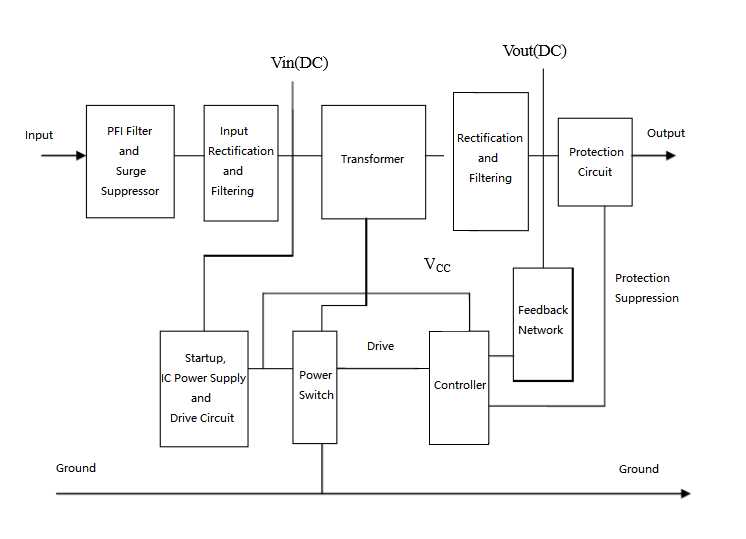
In modern electronic devices, the power supply is one of the essential components. It provides the necessary electrical energy for the device to work. Switched Mode Power Supply (SMPS) is a type of power supply that is widely used in various electronic devices due to its high efficiency and compact size.
The working principle of an SMPS involves several key components and a specific control loop. The block diagram of an SMPS illustrates the overall structure and functionality of the power supply. It consists of several stages, including an input stage, a rectification stage, a smoothing stage, a power conversion stage, and an output stage.
The input stage of an SMPS is responsible for receiving the AC input voltage and converting it into a DC voltage. This stage typically includes a transformer, which steps down the input voltage and isolates the circuit from the main power source. The rectification stage then converts the AC voltage into a pulsed DC voltage using diodes. The smoothing stage uses capacitors to filter and stabilize the voltage, reducing any ripples or fluctuations.
The power conversion stage is the heart of an SMPS. It uses a switching device, such as a transistor or a MOSFET, to rapidly turn ON and OFF, creating a square wave voltage. This voltage is then fed into a transformer to step up or step down the voltage as required. Finally, the output stage rectifies and filters the voltage to produce a stable DC output for the electronic device to operate.
What is a Switched Mode Power Supply (SMPS)?
A Switched Mode Power Supply (SMPS) is a type of power supply that uses switching devices, such as transistors or MOSFETs, to efficiently convert electrical energy from one form to another. It is commonly used in electronic devices, such as computers, televisions, and smartphones, to provide a stable and regulated power source.
There are several advantages of using an SMPS over traditional linear power supplies. One of the main advantages is its high efficiency. SMPS can achieve efficiencies of up to 90%, compared to the 60-70% efficiency of linear power supplies. This means that less energy is wasted as heat, resulting in lower operating temperatures and smaller heat sinks.
SMPS also offers a smaller form factor and lighter weight compared to linear power supplies. This makes it suitable for portable devices where space and weight are critical. Additionally, SMPS can operate over a wide range of input voltages and frequencies, making them versatile and compatible with various power sources.
The basic block diagram of an SMPS consists of four main stages: the rectifier, the filter, the regulator, and the output stage. The rectifier stage converts the incoming AC voltage into a DC voltage. The filter stage smooths out the pulsating DC voltage, reducing the ripple. The regulator stage controls the output voltage, ensuring it remains stable and regulated. Finally, the output stage delivers power to the load and may include additional protection circuits.
Overall, SMPS offers significant advantages in terms of efficiency, size, and versatility, making it a popular choice for powering electronic devices. Its ability to efficiently convert electrical energy makes it a more environmentally friendly option, as it reduces energy consumption and waste heat generation.
Definition and Basic Principle
An SMPS (Switch Mode Power Supply) is a type of power supply that utilizes high-frequency switching to convert electrical energy from one form to another. It is widely used in various electronic devices and appliances, including computers, televisions, and mobile phones.
The basic principle behind the working of an SMPS is the conversion of AC (alternating current) to DC (direct current) using a switching regulator and a transformer. The SMPS circuit includes several key components, including a rectifier, a filter, a transformer, and a switching regulator.
- Rectifier: The rectifier converts the AC input voltage into a pulsating DC voltage.
- Filter: The filter removes the unwanted AC ripple and smooths out the DC voltage.
- Transformer: The transformer steps down the voltage to a suitable level and isolates the circuit from the input voltage.
- Switching Regulator: The switching regulator controls the duty cycle of a high-frequency switch to regulate the output voltage. This switching action allows for efficient power conversion.
The SMPS works by rapidly switching the high-frequency switch on and off, creating a square wave voltage. This square wave voltage is then supplied to the transformer, which steps down the voltage and transfers it to the output circuit. The switching regulator controls the duty cycle of the switch to maintain a constant output voltage.
Overall, the SMPS offers several advantages over traditional linear power supplies, including higher efficiency, smaller size, and lighter weight. It is a crucial component in modern electronics, enabling efficient and reliable power conversion.
Block Diagram of SMPS
A Switched Mode Power Supply (SMPS) is a type of power supply that uses switching devices to convert electrical power efficiently. The block diagram of an SMPS typically consists of several key components:
1. Rectifier and Input Filter:
The input AC voltage is first rectified by a diode bridge to convert it into a pulsating DC voltage. The output of the bridge rectifier is then filtered using capacitors and inductors to remove any ripple and noise.
2. DC-DC Converter:
In the DC-DC converter stage, the rectified and filtered DC voltage is converted to the desired output voltage level using one or more power semiconductor devices, such as transistors or MOSFETs. The converter may be implemented as a buck converter, boost converter, or a combination of both depending on the required output voltage level.
3. Switching Control:
The switching control circuitry monitors the output voltage and adjusts the switching frequency and duty cycle of the power switching devices to maintain a stable output voltage. This feedback control loop ensures that the output voltage remains within the desired range despite changes in input voltage or load conditions.
4. Output Filter:
The output filter is used to further remove any residual ripple or noise present in the converted output voltage. It typically consists of capacitors and inductors that work together to smooth out the waveform and provide a clean DC voltage to the load.
5. Protection Circuits:
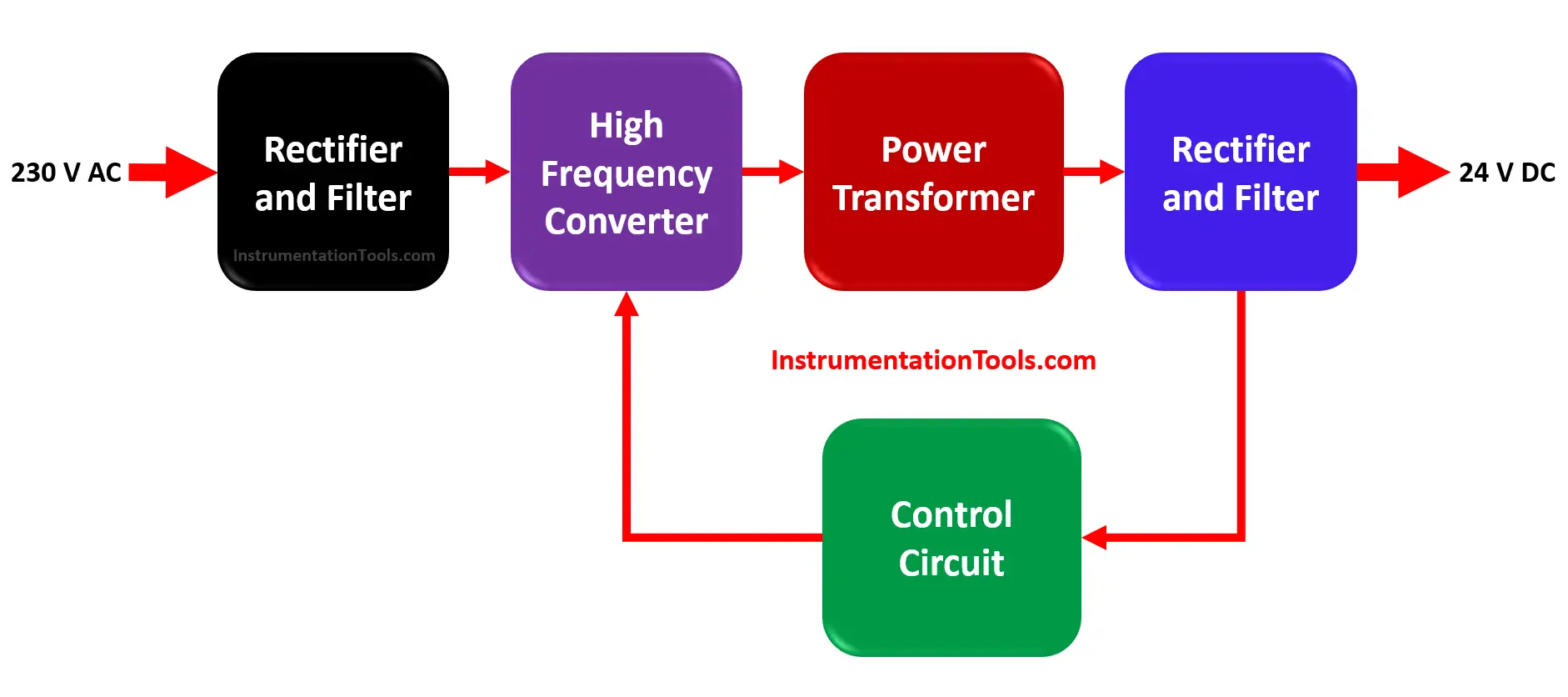
SMPS designs often include various protection circuits to safeguard the power supply and the connected load from overvoltage, overcurrent, and overheating. These protection circuits typically involve the use of sensors, comparators, and control circuitry to detect and respond to abnormal operating conditions.
In conclusion, the block diagram of an SMPS encompasses components such as rectifier and input filter, DC-DC converter, switching control, output filter, and protection circuits. These components work together to efficiently convert and regulate the electrical power, making SMPS an essential component in many electronic devices.
Main components and their functions
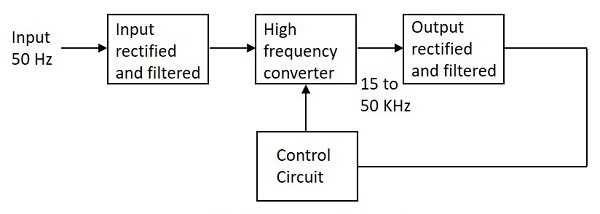
The switching mode power supply (SMPS) consists of several key components that work together to efficiently convert AC power to DC power. These components include:
- Transformer: The transformer is responsible for converting the incoming AC voltage to a lower or higher voltage, depending on the requirements of the power supply. It consists of primary and secondary windings that are magnetically coupled.
- Rectifier: The rectifier circuit is used to convert the AC voltage from the transformer’s secondary winding to a pulsating DC voltage. This is achieved by using diodes that allow current to flow in only one direction.
- Filter: The filter circuit is used to smooth out the pulsating DC voltage from the rectifier and provide a stable DC voltage output. It typically consists of capacitors and inductors that eliminate ripple and noise from the output.
- Switching transistor: The switching transistor is a key component in the SMPS as it controls the switching action of the power supply. It is typically a MOSFET or a Bipolar Junction Transistor (BJT) that turns on and off rapidly to regulate the output voltage.
- Pulse width modulation (PWM) controller: The PWM controller is responsible for generating the necessary control signals to regulate the output voltage of the SMPS. It compares the actual output voltage with a reference voltage and adjusts the duty cycle of the switching transistor accordingly.
- Feedback circuit: The feedback circuit is used to provide feedback to the PWM controller, allowing it to continuously adjust the duty cycle of the switching transistor based on the actual output voltage. It typically consists of a voltage divider and an optocoupler or a voltage comparator.
These main components work together in a switching mode power supply to efficiently convert AC power to DC power. The transformer converts the AC voltage to the required voltage level, the rectifier circuit converts it to pulsating DC, and the filter circuit smooths out the DC voltage. The switching transistor and PWM controller regulate the output voltage, while the feedback circuit ensures stability and accuracy in the voltage regulation.
Working of SMPS
In the field of power electronics, Switch Mode Power Supply (SMPS) is a widely used device for converting electrical power efficiently. It is an electronic power supply system that uses a switching regulator to control and stabilize the output voltage. Unlike traditional linear power supplies, SMPS operates at high frequencies, making them smaller, lighter, and more efficient.
The working principle of an SMPS can be explained using a block diagram. The input to the SMPS is typically an AC voltage, which is first rectified and then filtered to obtain a DC voltage. This DC voltage is then converted into high-frequency AC using a power electronic switch, such as a MOSFET or an IGBT. The high-frequency AC is then fed into a transformer, which steps up or steps down the voltage as required. The transformed AC voltage is rectified again, and the output is filtered to obtain a stable DC output voltage.
The key component in an SMPS is the switching regulator, which controls the switching on and off of the power electronic switch. The switching regulator uses feedback control to regulate the output voltage and maintain it at a constant level. It compares the output voltage with a reference voltage and adjusts the duty cycle of the power electronic switch accordingly. By controlling the duty cycle, the switching regulator can regulate the output voltage and provide a stable power supply.
SMPSs are widely used in various applications, such as computers, telecommunication equipment, consumer electronics, and industrial systems. They offer several advantages over traditional linear power supplies, including higher efficiency, smaller size, lighter weight, and better voltage regulation. However, SMPSs can generate high-frequency noise, which may require additional filtering or shielding to prevent interference with other electronic devices.
Input and Output Stages
The input stage of a switch mode power supply (SMPS) is responsible for converting the input AC voltage into a pulsating DC voltage. This stage typically consists of a full-wave rectifier and a filter capacitor. The full-wave rectifier rectifies the input AC voltage by converting it to a pulsating DC voltage, while the filter capacitor smoothes out the pulsations and provides a relatively stable DC voltage.
The output stage of an SMPS is responsible for regulating and filtering the DC voltage from the input stage and delivering it to the load. This stage typically consists of a feedback control circuit, a pulse width modulation (PWM) controller, a power switch, an output inductor, and an output capacitor. The feedback control circuit continuously monitors the output voltage and adjusts the PWM controller and power switch accordingly to maintain a stable output voltage. The PWM controller generates high frequency pulses that control the switching of the power switch, which in turn controls the flow of current through the output inductor and output capacitor. The output inductor helps in smoothing out the current flow, while the output capacitor further filters the DC voltage before it is delivered to the load.
The input and output stages of an SMPS work together to efficiently convert and regulate the input AC voltage to a stable DC voltage that can be used by electronic devices. The input stage converts the AC voltage to a pulsating DC voltage, while the output stage regulates and filters this DC voltage to deliver a stable voltage to the load. This efficient conversion and regulation process is what makes SMPSs popular and widely used in various electronic devices.
Advantages of SMPS
Switch Mode Power Supplies (SMPS) have several advantages over traditional linear power supplies:
Efficiency
One of the main advantages of SMPS is their high efficiency. Unlike linear power supplies, which have a linear voltage regulation, SMPS operate by rapidly switching the input voltage on and off at a high frequency. This switching action allows SMPS to convert the input voltage to the desired output voltage with minimal power loss. As a result, SMPS can achieve efficiencies of up to 90%, while linear power supplies typically operate at around 40-60% efficiency. This higher efficiency translates into lower power consumption and less wasted energy, making SMPS more environmentally friendly and cost-effective.
Compact Size
Another advantage of SMPS is their compact size. Traditional linear power supplies require heavy and bulky transformers to step down the input voltage to the desired output voltage. In contrast, SMPS utilize smaller and lighter transformers, along with additional electronic components such as capacitors and inductors, to achieve the desired voltage conversion. This compact design makes SMPS ideal for applications where space is limited, such as in portable electronic devices and small form factor computers.
Wide Input Voltage Range
SMPS are also capable of operating over a wide input voltage range. Unlike linear power supplies, which require a close match between the input voltage and the desired output voltage, SMPS can handle a wide range of input voltages without affecting the output voltage stability. This versatility allows SMPS to be used in a variety of applications, from automotive electronics to industrial equipment, where the input voltage may vary significantly.
Regulation and Control
SMPS offer better regulation and control compared to linear power supplies. They are equipped with feedback circuits that continuously monitor the output voltage and adjust the switching frequency or duty cycle accordingly to maintain a stable output voltage. This feedback mechanism ensures that the output voltage remains within the desired range, even in the face of input voltage fluctuations or load variations. Additionally, SMPS can be easily controlled and programmed to provide different output voltages or to implement various power management features, such as overcurrent protection and voltage regulation.
Higher Power Density
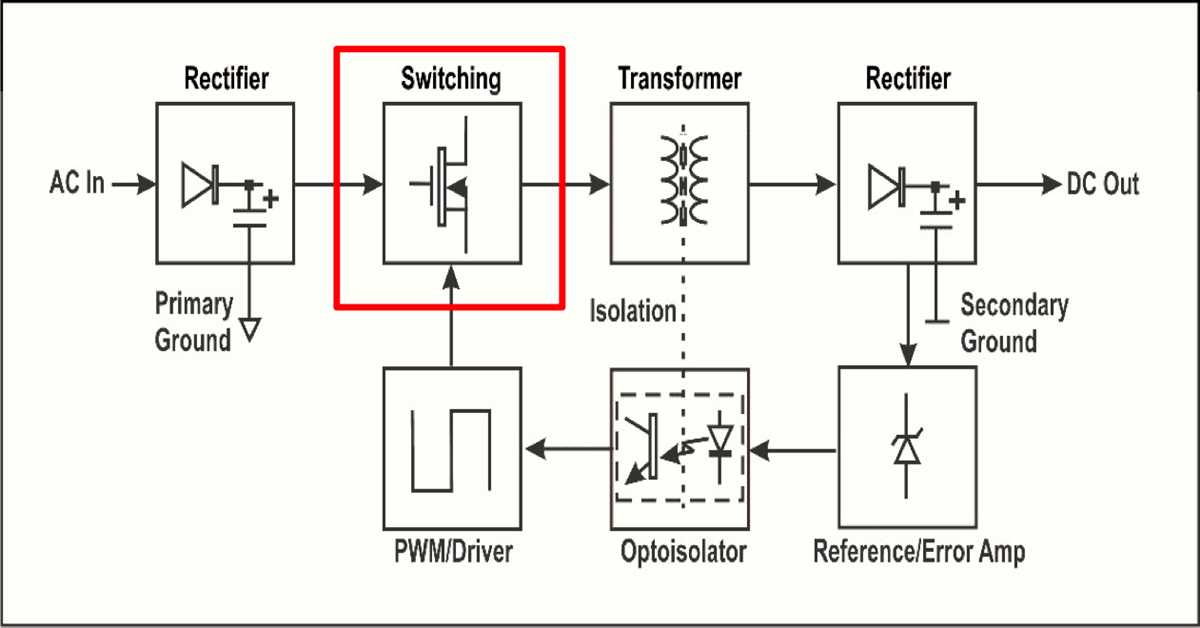
Due to their higher efficiency and compact size, SMPS can achieve higher power density compared to linear power supplies. Power density refers to the amount of power that can be delivered per unit volume or weight of the power supply. SMPS can deliver more power in a smaller and lighter package, making them suitable for high-power applications where space and weight are critical factors, such as in telecommunications equipment and power amplifiers.
In conclusion, SMPS offer several advantages over traditional linear power supplies, including higher efficiency, compact size, wide input voltage range, better regulation and control, and higher power density. These advantages make SMPS an attractive choice for a wide range of applications in various industries.
Efficiency and compact size
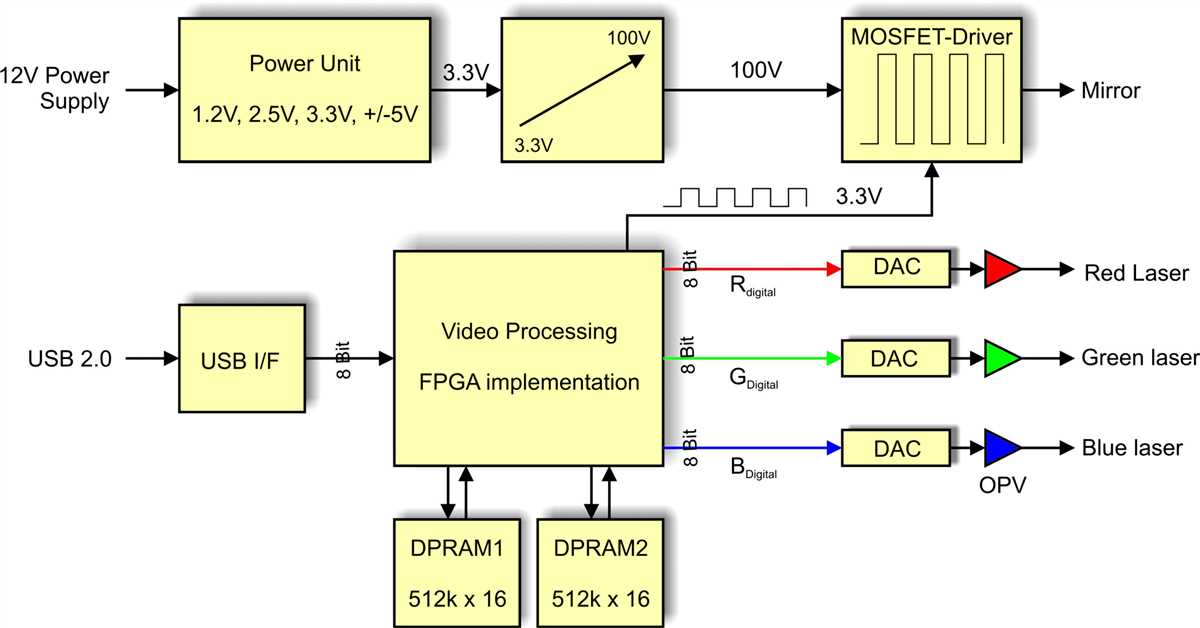
One of the main advantages of switching mode power supplies (SMPS) is their high efficiency compared to linear power supplies. The efficiency of an SMPS is typically around 70-90%, while linear power supplies usually have an efficiency of only around 50-60%. This high efficiency means that SMPS are able to convert a higher percentage of the input power into usable output power, resulting in less wasted energy and lower operating costs.
In addition to their high efficiency, SMPS also have the advantage of being compact in size. This is because the switching components used in an SMPS operate at high frequencies, allowing for the use of smaller transformers and capacitors. The compact size of SMPS makes them ideal for applications where space is limited, such as in portable electronic devices.
Overall, the efficiency and compact size of SMPS make them a popular choice for a wide range of applications. Whether it’s in a computer power supply, a mobile phone charger, or an LED lighting system, SMPS offer a reliable and efficient solution for converting and regulating electrical power.